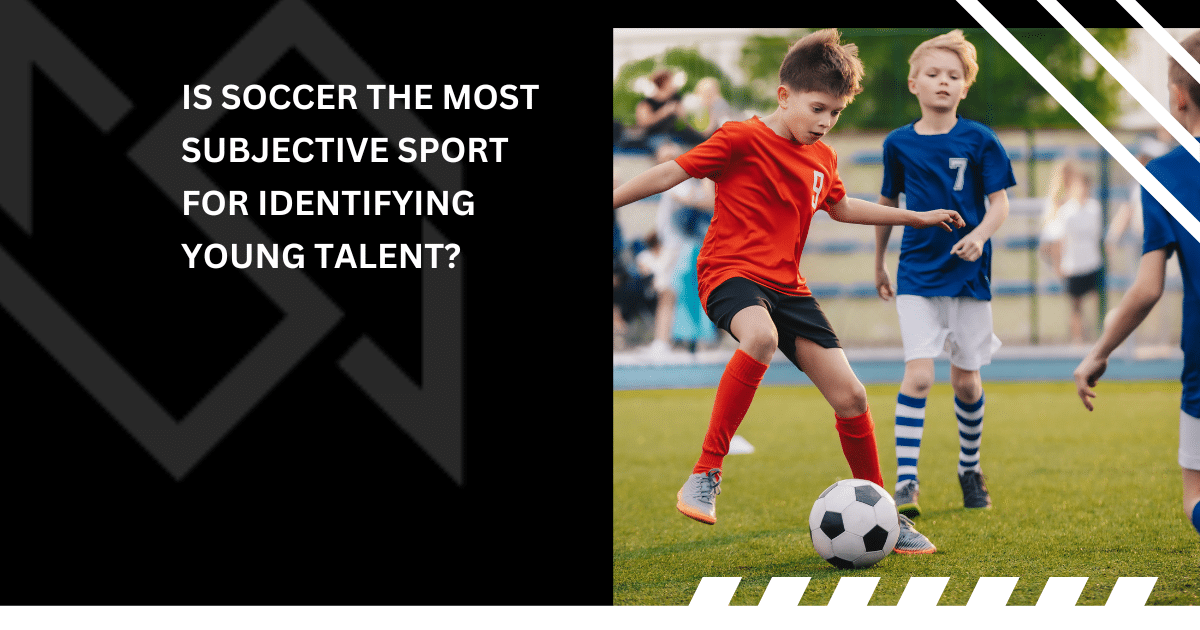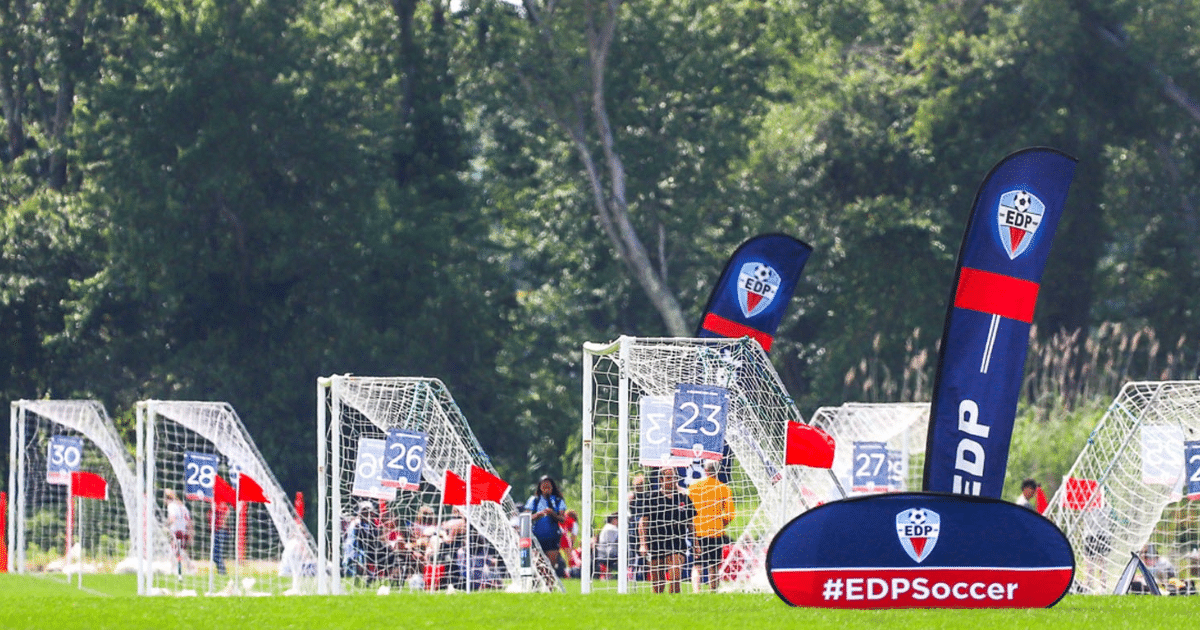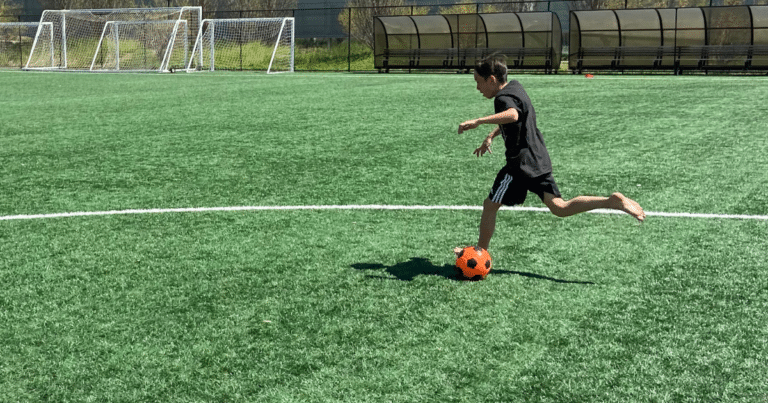Is Soccer the Most Subjective Sport for Identifying Young Talent?

Soccer has to be the most subjective sport to identify young talent.
If you really think about it, what can scouts go off of? For Strikers, they might go off of goals but what if a special talent doesn’t have a great team to get the ball up for him or her?
Other sports like basketball have points, assists, rebounds, blocks, and steals.
Baseball has batting average, RBIs, ERA, etc.
Tennis has individual wins and losses.
You get my point.

I’ve been around soccer long enough that I can usually spot a talented player by their movements on the field, ability to read the game, and the way they attack and defend.
But, I’m also wrong about a lot and kids who I thought were mediocre turn into top talents. And, vice-versa.
It’s Impossible to Compare Players – What Should We Look At?
It’s impossible to compare two soccer players side-by-side even if they play the same position.
If I were a youth scout, what would I look at? It would depend on the age but let’s say I’m scouting for a U-15 Talent ID. Here are 10 things I would consider:
- Soccer IQ
- Technical ability and foot skills
- Speed & Balance
- Work rate
- Speed of decision making
- Positive energy & body language
- Calm under pressure – limited mistakes because of it
- A knack for the ball or finding open space
- Not afraid to slide tackle or bump shoulders
- Self-motivated (not always look at a coach for direction)
Defining Subjectivity in Talent ID

When it comes to talent identification in sports, subjectivity plays a significant role.
Subjectivity refers to the personal opinions, biases, and preferences of talent scouts, coaches, and other evaluators.
Criteria for Youth Talent Assessment
Talent assessment involves evaluating a player’s skills and potential based on a set of criteria.
However, these criteria can vary widely depending on the evaluator, the team, and the league.
For example, some talent scouts may place more emphasis on physical attributes such as speed and strength, while others may prioritize technical skills like ball control and passing accuracy.
This can lead to discrepancies in the evaluation process and result in some players being overlooked or undervalued.
Psychological Factors
Psychological factors can also contribute to subjectivity in talent identification.
For example, a player’s attitude, work ethic, and mental toughness may be difficult to measure objectively. But, they play a large role in forming a team.
Additionally, evaluators may be influenced by a player’s perceived “intangibles” such as leadership ability or “grit.”
While these factors can be important to a player’s success, they can also be subjective and difficult to quantify.
Cultural Influences
Cultural influences can also play a role in talent identification.
For example, certain playing styles or tactics may be more valued in certain countries or regions.
Many coaches and scouts in the U.S., prefer speed and power with the potential to refine soccer skills.
Whereas, countries in Europe prefer players with technical skills and game IQ.
These biases can lead to a lack of diversity in talent identification and result in talented players being overlooked.
Challenges in Youth Soccer Talent Identification

Identifying young talent in soccer is a complex process with many challenges. While some players may show early signs of promise, others may develop later in life.
Additionally, there are several factors that can impact a player’s development and opportunities to showcase their skills. Let’s take a look at them.
Early Specialization vs. Late Bloomers
One of the challenges in youth soccer talent identification is determining whether a player is a late bloomer or simply not talented enough.
Many players who may not stand out at a young age may develop into talented players later in life.
On the other hand, some players who show early promise may not continue to develop at the same rate. This is especially true during the early teen years when some kids develop much faster but, eventually, others will physically catch up to them.
Impact of Socioeconomic Status
Another challenge in youth soccer talent identification in the U.S. is the impact of socioeconomic status. This is all thanks to the pay-to-play model adopted by almost every club.
Players from wealthier families may have access to better and more training facilities, coaching, and equipment, giving them an advantage over players from less well-off backgrounds.
This can make it difficult to identify talented players who may not have access to the same resources.
Scouting Network Limitations
Scouting networks in the U.S. can also present a challenge when it comes to identifying young talent.
Many clubs and organizations have limited resources and may not be able to scout players from all regions.
The United States is very spread out compared to other countries which makes getting scouted even more difficult.
Yes, there is video, but scouts can’t possibly scour hundreds of videos for a handful of player clips.
All in all, this can result in talented players sometimes being overlooked simply because they are not in the right location.
Final Thoughts
There are a lot of talented youth soccer players in the U.S. Some of them get found at an early age and many get overlooked.
If you are a player reading this, the best thing you can do is play your game. Put yourself in situations to be seen (i.e. – ID camps, showcases, scrimmages, etc.) and proactively reach out.
I do think cream usually rises to the top but sometimes it needs a good stir!

Written By: SoccerNovo
SoccerNovo is an independent youth soccer media brand built to help parents, players, and coaches better understand the game and the pathways available in U.S. soccer. Our mission is to make youth soccer simpler, clearer, and more accessible for everyone involved in it.
Let’s connect







